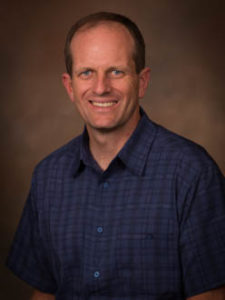 University of Utah mechanical engineering professor and chair Bruce Gale, whose research in microfluidics has been spun out into numerous companies and led to 22 US patents, was elected as a fellow of the National Academy of Inventors (NAI).
University of Utah mechanical engineering professor and chair Bruce Gale, whose research in microfluidics has been spun out into numerous companies and led to 22 US patents, was elected as a fellow of the National Academy of Inventors (NAI).
The academy is a nonprofit organization that recognizes and encourages inventors, enhances the visibility of universities, educates and mentors students, and publicizes the inventions of its members. The NAI Fellows Program highlights academic inventors, with just over 1,400 fellows worldwide. This distinction is given to those who demonstrate a “prolific spirit of innovation in creating or facilitating outstanding inventions that have made a tangible impact on quality of life, economic development, and the welfare of society.” Gale joins past University of Utah fellows including College of Engineering Dean Richard B. Brown; former presidents David W. Pershing; and Electrical and Computer Engineering professor Cynthia M. Furse.
“I am excited to receive recognition at this level,” said Gale. “Looking at the other fellows, it’s a great group of people to be associated with.
Gale’s research is focused on using microfluidics to solve problems. He has regular conversations with doctors, chemists, and biologists about problems they are trying to solve and then looks at ways to apply microfluidics to solve those problems. He has developed tools for drug development, pathogen detection, fast PCR technologies, medical devices, and more.
“Microfluidics is a great tool for manipulating biological materials,” said Gale, “which is why so much of our work is application oriented.”
In addition to the patents Gale has received for his work, he has also spun off multiple companies. The earliest company, originally Wasatch Microfluidics and now called Carterra, provides technology that helps rapidly discover new antibody-based drugs, which are becoming very common. Their technology is in 17 of the 20 largest pharmaceutical companies and was used to help develop one of the drugs used to treat COVID. Another company, WFluidx, builds a device for genotyping zebra fish embryos. This technology has helped labs more quickly find embryos that have generated specific genetic mutations. Biologists can use these zebra fish to test potential treatments to these genetic diseases, which can then lead to treatments in humans. Around 100 labs around the world are using this device.
Gale also has spun out additional companies that help develop and manufacture microfluidic devices, treat male infertility, as well as quickly detecting pathogens. Many of these companies employ current and former students. Additionally, other technologies have been licensed by companies, for example a fast PCR technology being used by a company in Boston.
“Our projects are almost all inventing something,” said Gale. “We get to do a lot of different things, the students really enjoy it, and I have a lot of fun.”
You can learn more about Dr. Gale’s work through his lab website.
Gale joins Electrical & Computer Engineering professor Jerry Stringfellow as the two fellows named this year from the College of Engineering at the U.